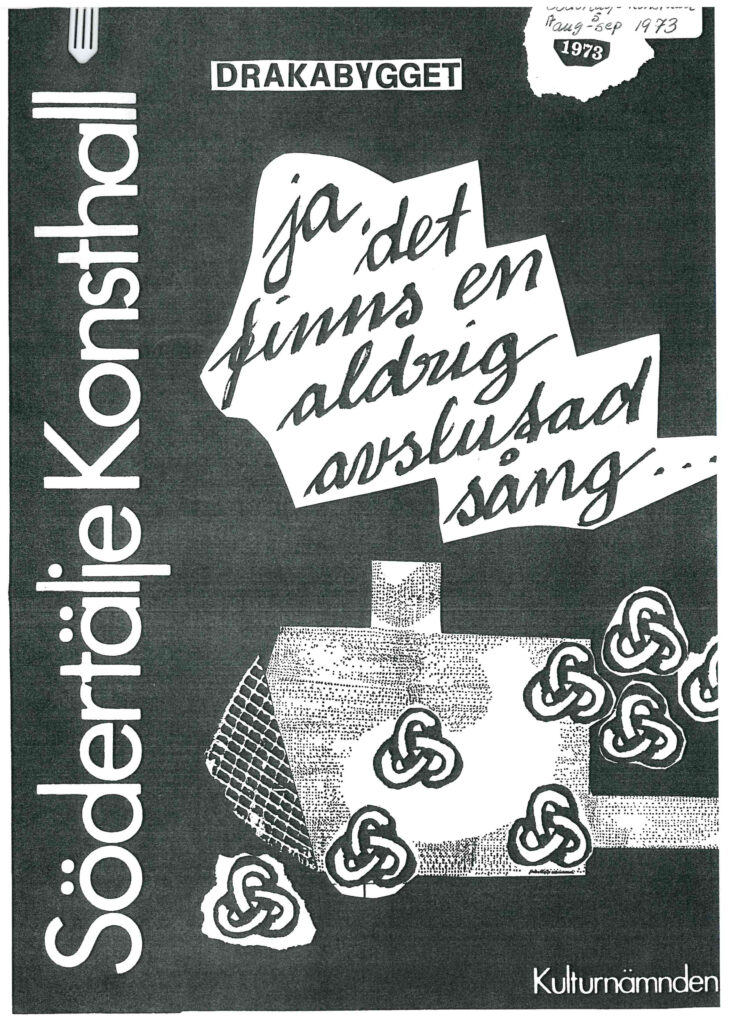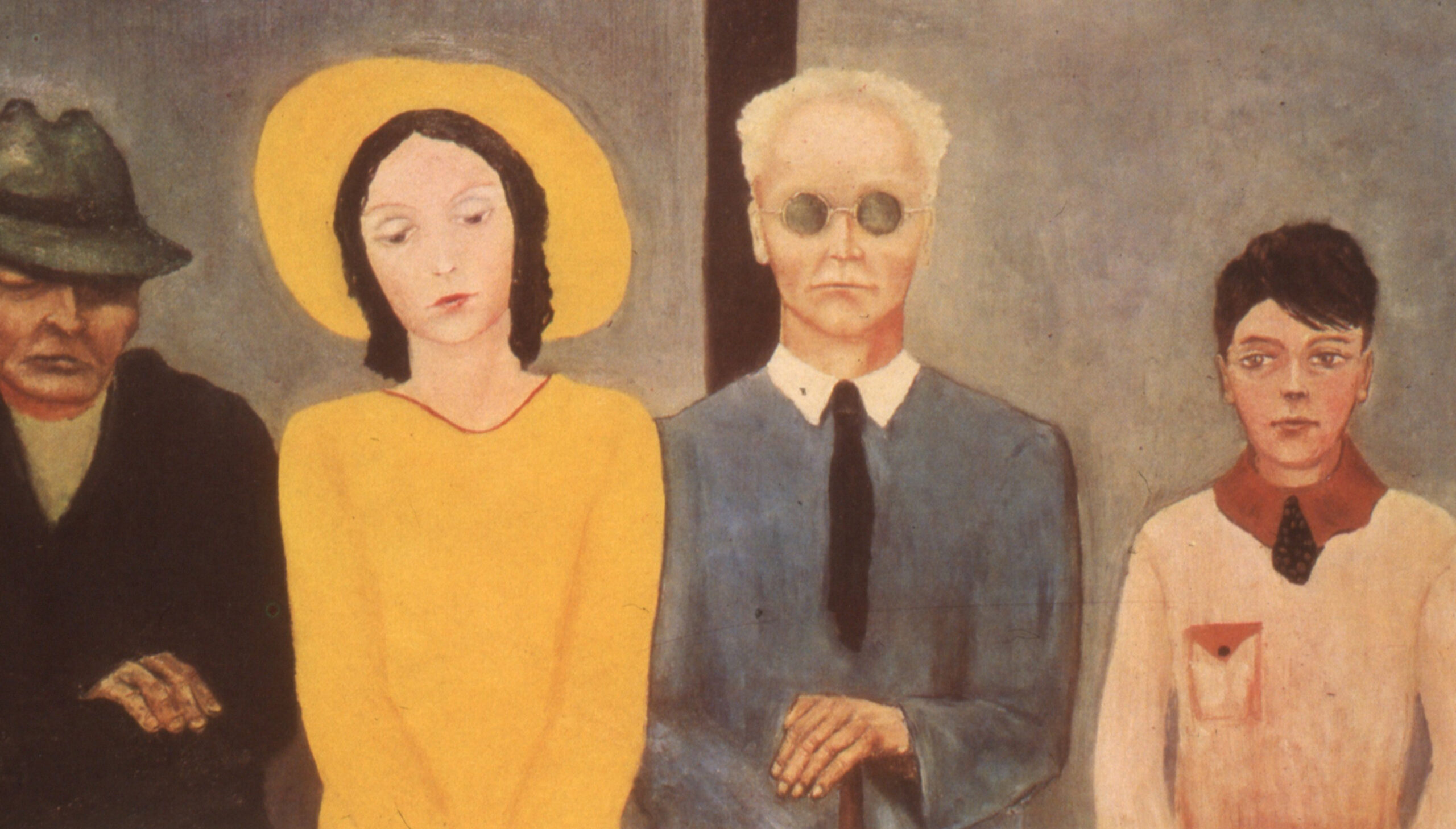


It has only been known to a few that Peter Weiss – the playwright and author today read all over the world – really started out as a visual artist, studied at the Academy of Fine Arts in Prague and worked mainly as a painter and a drawer during the 1930s and 40s. The visual artistry continued during the 50s but in other medias, such as collage and film, whilst the literary work increased in strength to culminate with a number of prose books and plays during the 60s and 70s.
The autobiographical novels Abschied von den Eltern (Leavetaking) and Fluchtpunkt (Vanishing Point) do together show the artist’s course of development, but it is the confrontation with Peter Weiss’ 30s and 40s production of paintings and drawings in original or photo reproductions that show how close these books keep to reality, both in general and in particulars, despite rewritings or additions.
What is apparent already in the paintings of teenage Peter Weiss is a precocious psychological clear sightedness in the depiction of people – “People on trolley” (“Människor i spårvagn”) I and II (1934), and a personal and distinctive creative imagination – “Mystery games” (“Mysteriespel”) (1934). Here one can already see the seed of Peter Weiss the playwright, a seed that would come to grow during a couple of decades and then with force and speed branch out into a rich authorship. The 20 year old Peter Weiss’ beautifully written and illustrated manuscripts show that his word and image imagination went hand in hand from the beginning, and that they were essentially equal sides of a multifaceted personality.
A closer study would surely show that the specific visual imagination of author Peter Weiss, his visual talent, follows him through every change of medium of expression, from painting to collage, from collage to film, to prose to playwriting, and so on. It is clear, for example, how the playwright Peter Weiss in “Marat/Sade” makes a tableau vivant out of David’s famous painting with the murdered Marat sitting in the bathtub. If the inspiration here was of picturesque character, it received a plastic expression in the Portugal play “Song of the Lusitanian Bogey” (”Skråpuken”), in which the “main character” is a kind of sculpture made of scraps. Gunilla Palmstierna was the scenographer of this now almost classic assemblage that today is exhibited at the Swedish Film Institute, Stockholm.
When Peter Weiss now returns as a prose writer with the great novel of ideas, “The Aesthetics of Resistance” (“Motståndets estetik”), he devotes large, illuminating passages to the visual arts – classic and modern, everything from the Pergamon Altar to Picasso’s Guernica, and throws new light over both famous and unknown works with a social and political message through the times.
An artistry such as Peter Weiss’ has earlier, through its diverse nature, been considered by critics to be fragmented and incoherent, but today we have the opportunity to state the opposite: how consistently and organically many of the pieces of the personality puzzle have been forged together and grown into a clear image of an artistry with an important universal meaning, both in content and message.
For me personally, who early on had the opportunity to meet Peter Weiss’ authorship as a critic, and who has also worked with the 30s and 40s in both art and literature contexts, the work with this exhibition has presented a fascinating challenge, partly in terms of research when it has come to tracing, identifying, dating and reconstructing existing, destroyed or disappeared works of Peter Weiss, not least from the second half of the 30s, when he fled from one country to another.
The exhibition and its catalogue has in this context meant a first step in reconstructing a piece of contemporary history mirrored in an individual but representative artist fate, in the middle of the central European vortex of the 30s.
It has been a given for Södertälje culture committee to offer their resources – as far as they go – in order to present Peter Weiss’s visual and cinematic art and his authorship in the municipality’s art gallery, library, theatre and cinema. The “immigrant municipality” of Södertälje, with its cosmopolitan character and many open doors to the world, ought to be able to offer Peter Weiss – once an expatriate, once an immigrant in Sweden – a response.
I want to offer my sincerest thanks on behalf of the Södertälje culture committee to the institutions and individuals who has put Peter Weiss’s work at our disposal. A thank you to professor Endre Nemes for valuable information about the time of studies in Prague and to the writer Bengt Sjönander for impulses to the exhibition. Also a thank you on behalf of Peter Weiss to NUNSKU, the Committee for Exhibitions of Contemporary Swedish Art Abroad, that has given the means for possibly starting the exhibition’s tour around Europe. At last: a warm welcome to Södertälje, Peter Weiss!
– Per Drougge, curator